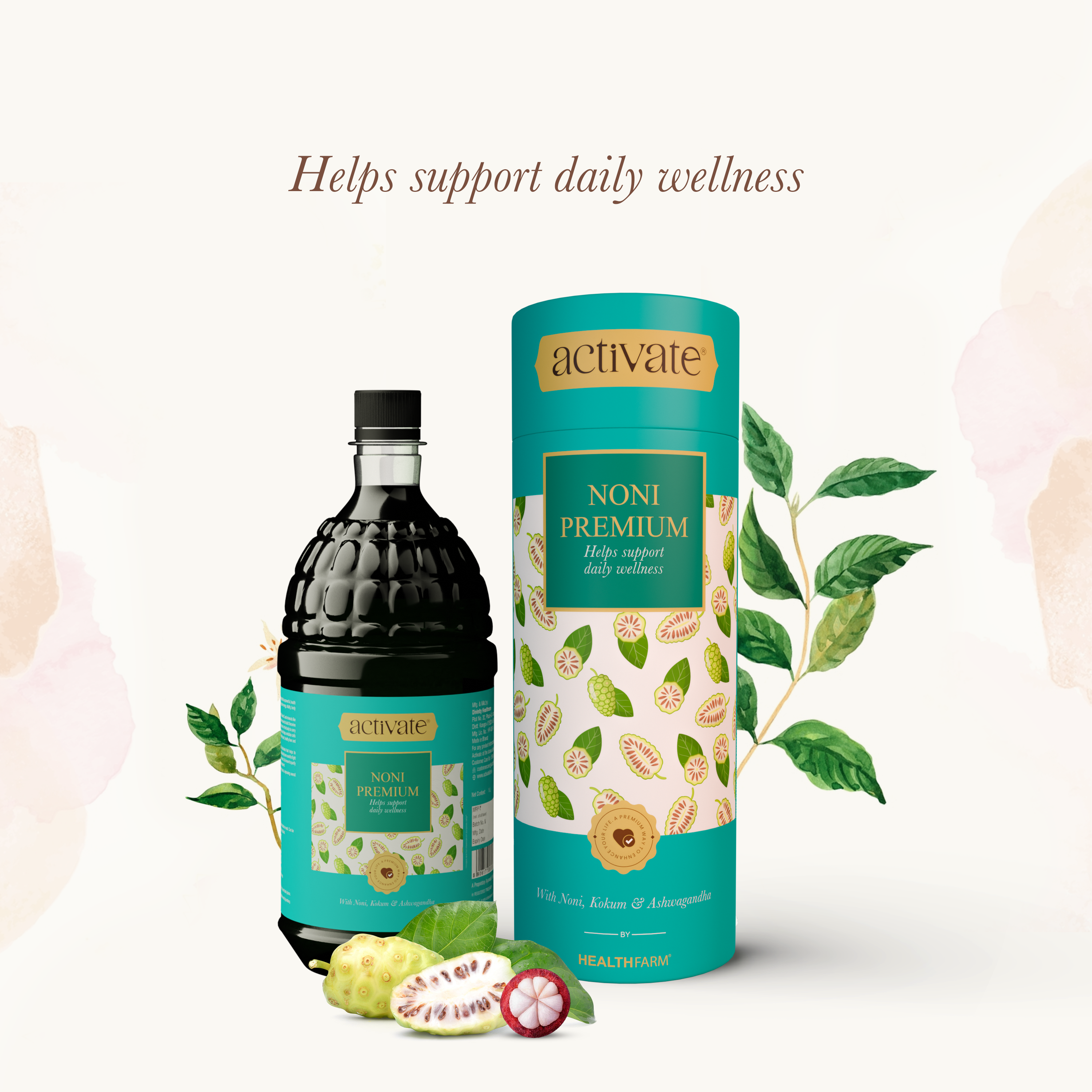Ritucharya, an ancient Ayurvedic practice, combines "Ritu" (season) and "charya" (regimen or discipline). It involves a lifestyle and diet plan to address seasonal changes' physical and mental effects. Following Ritucharya means adjusting your habits and diet based on the six seasons: winter, spring, summer, monsoon, autumn, and pre-winter. This helps keep your body's energies in balance and prevents health issues. By syncing with nature, Ritucharya in Ayurveda promotes well-being and guards against sickness by adapting your routines to suit each season.
6 Seasons According To Ayurveda
A year in the Indian subcontinent is divided into two time periods called "Kaals." Each Kaal includes three seasons, making a total of six seasons in a year. Each season lasts for two months, creating a distinct and specific seasonal cycle in this region.
Adaan Kaal/ Uttaryana/ Northern Solstice:
Shishir Ritu (Winter) Mid-January to Mid-March
Vasant Ritu (Spring) Mid-March to Mid-May
Grishma Ritu (Summer) Mid-May to Mid-July
Visarga Kaal/ Dakshinayana/ Southern Solstice:
Varsha Ritu (Monsoon) Mid-July to Mid-September
Sharad Ritu (Autumn/ Fall) Mid-September to Mid-November
Hemant Ritu (Late Autumn/Pre-Winter) Mid-November to Mid-January
Aadaan Kaal/ Uttaryana/ Northern Solstice
In this season, the strong sun and wind take away energy from people and the coolness of the earth. The hot sun makes plants and humans feel warm and dry, reducing their strength.
Shishir Ritu (Winter)
Mid-January to Mid-March: This season is cold and windy. People feel less energetic, and there's an increase in Kapha Dosha (one of the body's energies). The body's metabolism, called Agni, is higher during this time.
Diet Pattern: As per Ritucharya in Ayurveda it is recommended to prefer foods with a tart taste, like amla. Include cereals, pulses, wheat and gram flour items, fresh rice, corn, and more in your diet. Also, add ginger, garlic, haritaki (fruits of Terminalia chebula), pippali (products of Piper longum), sugarcane items, and milk & other dairy products.
Avoid foods that taste spicy, bitter, or astringent, as well as those with predominantly light and cool qualities.
Lifestyle: It's important to massage with oil, powder, or paste, take a shower with lukewarm water, get some sunlight, and wear warm clothes.
Vasant Ritu (Spring)
Mid-March to Mid-May: Ayurveda says that this time of year is known for blooming flowers and the emergence of new leaves. In terms of Rasa (taste) and Mahabhuta (elements), the prevalent qualities are astringent taste and association with Earth and Air, respectively. People's strength is moderate, Kapha Dosha tends to be imbalanced, and digestion is sluggish during this season.
Diet Pattern: During this season, Ritucharya in Ayurveda advises consuming easily digestible foods. Opt for cereals like wheat, rice, and old barley, and include lentils, mugda, and bitter or pungent-tasting items in your diet. Honey is a good addition, and rabbit meat is recommended for its easy digestibility. Avoid heavy, viscous, and cold foods during this time.
Lifestyle: It's recommended to use lukewarm water for bathing. Exercising is important in the spring season. Try massaging with a powder made from Chandana, Kesara, and Agaru. Gargling, smoking, using collyrium, and detox methods like Vamana and Nasya are suggested. Avoid daytime naps in this season.
Grishma Ritu
Mid-May to Mid-July: According to Ayurveda this season is extremely hot with unhealthy winds, causing lakes and rivers to dry up and plants to wither. Individuals feel weakened as Vata Dosha accumulates, while Kapha Dosha is relieved. The person's Agni is mildly active. It is advised to avoid salty and pungent foods, as well as warm foods with sour taste.
Diet Pattern: Choose easily digestible foods that possess sweet, unctuous, cool, and fluid qualities, such as rice and lentils. It is recommended to consume ample water and various fluids like cold water, buttermilk, fruit juices, meat soups, mango juice, and curd with pepper. Before bedtime, it is advised to have milk with sugar.
Avoid foods with salty, sharp, and sour tastes, as well as those that are warm.
Lifestyle: Staying in cool areas, using sandalwood and other aromatic pastes on the body, adorning oneself with flowers, opting for lightweight clothing, and taking daytime naps can be beneficial. During the night, one can enjoy the refreshing moonlight accompanied by a gentle breeze. It is advisable to avoid intense physical activity or strenuous work, refrain from excessive indulgence in sexual activities, and abstain from alcoholic beverages.
Visarga kaal / Dakshinayana/ Southern Solstice
Visarga Kaal, also known as Dakshinayana or Southern Solstice, marks the sun's southward movement in Ayurveda. It signifies a shift toward cooler, vata-dominant seasons. Ayurvedic ritucharya recommends adjusting lifestyle and diet during this period, emphasizing practices that balance vata dosha to promote well-being and harmony with the changing natural rhythms.
Varsha Ritu (Monsoon)
Mid-July to Mid-September: This is the rainy season known as Varsha Ritu. It is characterized by cloudy skies and gentle rains, without thunderstorms. Lakes and rivers are filled with water. The dominant tastes (Rasa) are sour, and the elements (Mahabhuta) are Earth and Fire. Individuals may experience a decrease in strength during this season. Vata Dosha fluctuates, while Pitta Dosha accumulates, leading to imbalances in Agni (digestive fire).
Diet Pattern: Ritucharya in Ayurveda recommends including foods with a combination of tangy (Amla), salty (Lavana), and oily (Sneha) tastes in your diet. Opt for grains like old barley, rice, and wheat. Include soups like meat soup and Yusha in your daily meals. Additionally, consider consuming medicated or boiled water for better health.
Avoid drinking excessive water and also from rivers and limit intake of fluids and wine. Do not consume heavy and hard-to-digest foods like meat.
Lifestyle: During this season, it is recommended to bathe with boiled water and massage the body with oil. Avoid getting wet in the rain, taking daytime naps, exercising, engaging in sexual activities, strenuous work, exposure to wind, and staying near riverbanks.
Sharad Ritu (Autumn/Fall)
Mid-September to Mid-November: In this season, the sun shines brightly, the sky is mostly clear with occasional white clouds, and the ground is covered in wet mud. The dominant taste is salty; the primary elements are water and fire. People's strength and energy are moderate, Vata Dosha is calmed, Pitta Dosha is aggravated, and the digestive fire increases during this time.
Diet Pattern: It is recommended to consume foods with Madhura (sweet) and Tikta (sharp) tastes, Laghu (light), and cold properties, to appease aggravated Pitta. Include wheat, green gram, sugar, nectar, and Patola (Trichosanthes diocia) in the diet, as well as meat from land animals (Jangala Mamsa). Avoid hot, bitter, sweet, and astringent foods, and eliminate fatty items, oils, aquatic meats, and curds from your diet during this season.
Lifestyle: Eating only when experiencing hunger is recommended as a healthy habit. Opt for water purified by sunlight during the day and moonlight in the evening for drinking and bathing. Wear flower garlands and apply a paste of Chandana (Sandalwood) on your body. The initial three hours of moonlight at night are believed to be beneficial for well-being. Therapeutic procedures like Virechana (cleansing), Rakta-Mokshana (phlebotomy), etc., are advised during this season.
Avoid daytime naps, prolonged exposure to sunlight, and overeating during this period for optimal well-being.
Hemant Ritu (Late Autumn/ Pre-winter)
Mid-November to Mid-January: The onset of cool breezes brings a noticeable chill in the air. The prevailing taste during this season is sweet (Madhura), and the dominant elements are Earth (Prithvi) and Water (Apa). Individuals experience elevated energy and strength, while the imbalanced Pitta Dosha is alleviated. The activity of Agni, the digestive fire, is heightened during this time.
Diet Routine: It is recommended to include rich, sweet, tangy, and savory foods in one's diet. Grains and legumes like new rice, various flour preparations, green gram, and Masha are suggested. Additionally, incorporating different meats, fats, dairy products, sugarcane products, fragmented preparations (Shidhu), sesame (Tila), etc., is advised.
It is advisable to avoid foods that aggravate Vata, such as those that are light, cool, and dry. The consumption of cold drinks is also contraindicated.
Lifestyle: Engaging in physical exercise, receiving massages for the body and head, enjoying warm water, embracing sunbathing (Atapa-sevana), applying Agaru on the body, wearing comfortable clothing, practicing sexual intimacy with a committed partner, and residing in warmer climates are recommended. It is advisable to refrain from daytime napping and exposure to harsh, cold winds.
In conclusion, following Ayurveda's Ritucharya helps us stay healthy by adjusting our habits with each season. It's like syncing with nature to keep our body and mind in balance. Activate®️, one of India’s leading Ayurvedic brands brings you 100% Ayurvedic products designed to support your daily well-being. Check out our Activate®️ products on our website activatelife.in to experience the benefits of Ayurveda in a simple and effective way. Take a step towards a healthier lifestyle with Activate®️– Key to a healthy life.
FAQs
What is Ritucharya in Ayurveda?
Ritucharya is an Ayurvedic practice that involves adapting lifestyle and diet according to the six seasons of Ayurveda to maintain physical and mental well-being.
What is the significance of Aadaan Kaal in Ayurveda?
Aadaan Kaal, or the Northern Solstice, is characterised by a strong sun and wind, impacting energy levels and promoting warmth.
Where can I find Activate®️ products?
Activate®️ products can be found on the brand's official website at activatelife.in.
What is the role of Ayurvedic ritucharya in maintaining overall well-being?
Ayurvedic ritucharya helps individuals stay healthy by adjusting habits and diet according to each season, promoting balance in the body and mind.
Why is Activate®️ referred to as the "Key to a healthy life"?
Activate®️ is described as the "Key to a healthy life" because it offers natural and Ayurvedic products to enhance and maintain one's health and vitality.




















Leave a comment
This site is protected by hCaptcha and the hCaptcha Privacy Policy and Terms of Service apply.